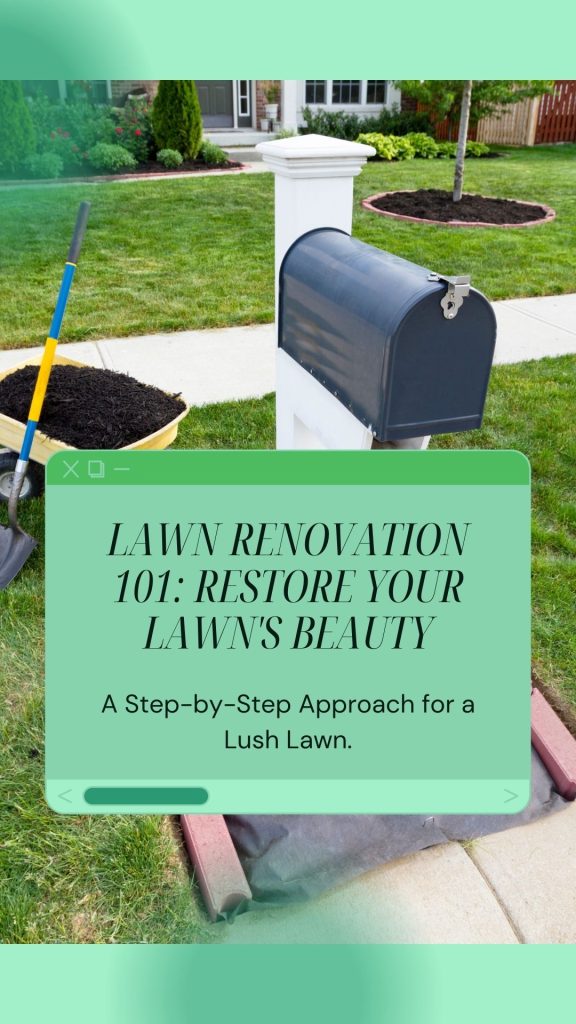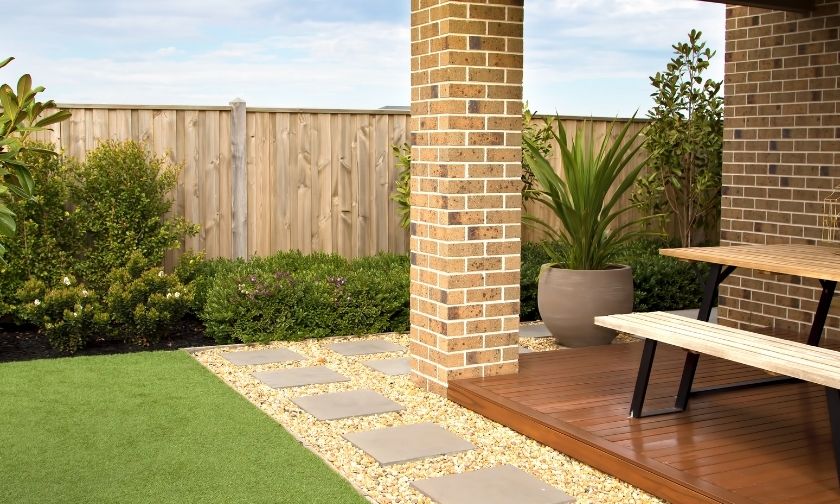A worn-out lawn can significantly diminish the beauty of your home’s exterior, whether due to extreme weather conditions, neglect, or improper care. In this guide, we will walk you through a step-by-step process, from identifying the issues with your lawn and choosing the right renovation techniques to maintaining the renewed lushness. So, prepare your gardening gloves, and let’s embark on this journey to reclaim the green splendor of your lawn.
Clear Away Existing Weeds and Debris
Before starting any lawn renovation, the first step is to clear away any weeds and debris from the surface. Weeds compete for nutrients and water with your grass and weaken its growth. Use a garden rake or a dethatcher to remove dead grass, leaves, and other debris accumulating on your lawn’s surface. This process will help expose the soil and allow air, water, and nutrients to reach the roots of your grass.
Identify Lawn Issues
A common mistake when renovating a lawn is not identifying the underlying issues that caused its deterioration. Take some time to assess your lawn’s overall health and identify problems such as soil compaction, poor drainage, thatch buildup, or pest infestation. These issues should be addressed before moving on to the next step, as they can hinder the revival of your lawn.
Determine the Right Renovation Techniques
Once you have identified any underlying issues, it’s time to choose the right renovation techniques for your lawn. Depending on your specific needs, you may need to aerate the soil, apply fertilizer, overseed or reseed areas with bare patches, or even replace the entire lawn. It’s essential to have a clear plan and gather all the necessary tools and materials before starting any renovation work.
Test the Soil for Nutrients
A healthy lawn needs a balanced combination of nutrients to thrive. Therefore, it’s crucial to test your soil for nutrient levels before applying fertilizers or other amendments. You can purchase a DIY soil testing kit or send a sample to a local agricultural extension office for professional analysis. Based on the results, you can determine what type and amount of fertilizer are needed to provide optimal nutrition for your grass.
Choose the Right Type of Grass Seed
When choosing the right grass seed, consider your climate, soil type, and desired lawn appearance. Some varieties are more suitable for shady areas, while others are better suited for hot and dry climates. It’s also important to select high-quality seeds without any weed or filler content. For a quick fix, you can opt for fast-growing grass varieties, but for long-term results, choose a species best suited to your region. If you don’t know how to pick the best grass seed for your lawn, we suggest you talk to a professional franchise in your area.
Apply Fertilizer to Rich the Soil
Fertilizers are essential for replenishing the nutrients in your soil and promoting healthy grass growth. Consider using organic fertilizers, which have a longer-lasting effect and don’t harm the environment. However, if you’re looking for a quick fix, choose synthetic fertilizers that can provide immediate results. Be sure to follow the recommended application rates and avoid overfertilizing, as it can lead to chemical burns and damage your lawn.
Overseed or Reseed Bare Patches
Bare patches are a common sight in a worn-out lawn, and they not only look unsightly but also provide an opportunity for weeds to grow. To restore these bare spots, you can either overseed or reseed the area. Overseeding is spreading grass seed over an existing lawn, while reseeding involves removing the dead turf and then sowing new seeds. Whichever method you choose, water the area regularly until the grass is established.
Water Properly
Proper watering is crucial for maintaining a lush and healthy lawn. Water your newly renovated lawn deeply once or twice a week rather than shallowly every day. This will promote deeper root growth and make your grass more resilient to drought conditions. It’s also important to water in the morning or evening when temperatures are cooler, as this reduces water loss due to evaporation.
Amend the Surface for Better Drainage
Poor drainage can lead to water pooling on the surface, which can drown your grass and create an ideal environment for disease and pests. You can use a garden fork or aerator to poke holes in the soil or apply topdressing materials such as compost, sand, or gravel to improve drainage. This will help break up compacted soil and allow water to penetrate deeper.
Keep Up with Maintenance
Once your lawn renovation is complete, it’s important to maintain its health and beauty. Regular mowing, watering, and fertilizing will help keep your grass lush and weed-free. It’s also essential to address any issues that arise promptly, such as pest infestations or soil compaction. With proper maintenance, you can ensure that your lawn stays green and beautiful for years to come.
Mow Your Lawn Regularly
Proper mowing is crucial for maintaining a healthy lawn. Set your mower blade to the appropriate height for your grass type, and avoid cutting more than one-third of the blade’s length at a time. This will prevent shocking the grass and encourage stronger root growth. It’s also important to keep your mower blades sharp, as dull blades can tear the grass instead of cutting it cleanly.
Consider Adding New Features
As you work on restoring your lawn’s beauty, consider adding new features to enhance its overall appearance. Planting flower beds, installing a water feature, or creating a seating area can add interest and value to your outdoor space. Just make sure not to overcrowd your lawn, as this can lead to more maintenance and potentially harm the health of your grass.
Conclusion
Lawn renovation can be challenging, but it’s essential for maintaining a beautiful and healthy outdoor space. By following these steps and keeping up with maintenance, you can restore your lawn’s beauty and enjoy a lush green carpet of grass in your yard. Remember to always identify any underlying issues, choose the right renovation techniques, and maintain proper watering and mowing habits to keep your lawn thriving for years.




